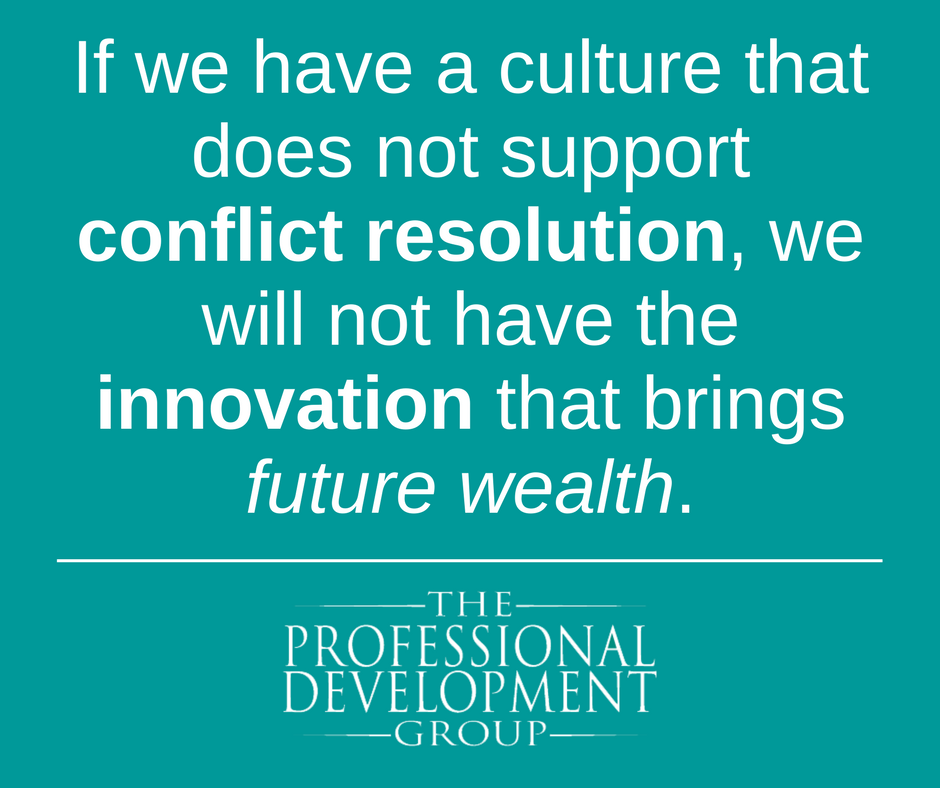This article first appeared in Service Strategies. The article reads:
Business is more complex than it has ever been. Companies have to compete in a global economy, adapt to constantly shifting market trends, acquire and master new technologies that continually change how business is done.
It’s no longer possible to follow what Amy Edmondson, author of Teaming: How Organizations Learn, Innovate, and Compete in the Knowledge Economy, describes as the “mindset of execution,” where leaders merely tell people what to do in order to get things done. Now organizations must collaborate in and across teams and learn their way through complexity and conflict.
The path to success is not always easy, but there are a few steps that can help in fostering the kinds collaborations that can tackle complexity more effectively.
Step 1. Raise your awareness about potential conflicts.
Learn how cultural and thinking differences, the reality of hierarchical status, and physical distance can separate team members. Understand thoroughly the obstacles that may impede collaboration, and share your insights with team members: “Our German colleagues really value punctuality, so let’s make sure that when we’re video-conferencing, everyone is on time for these events. We will make a better impression with our German counterparts if we show them that we value their time.” Understanding and communicating around potential obstacles will allow leaders to prevent conflicts and adapt their style to support and facilitate teaming successfully.
Step 2. Learn about communication styles.
The are 4 different communication styles and the differences among them can affect what people hear and comprehend in meetings, which can cause misunderstandings and create friction in working relationships. For example, when one type of communicator says, “I’ve researched this topic,” she means that she has looked at ALL the relevant facts, articles, data, and put them together to see the whole picture. However, when a person with a different style says, “My research tells me this is a good direction for us to move forward in,” he means he found an article or saw a sign that caused him to feel like this was worthy of moving forward; he did not read every article, book, and report on the topic. He used his gut to make decisions, not necessarily facts and data. Clearly, these two types of communicators have very different understandings of what “research” means. Leaders who want to create and manage star-performing teams need to school themselves in communication styles and create a common language so that every member of the team can communicate effectively with each other.*
Step 3. Acknowledge that conflict and frustration are inevitable in solving complex problems.
Effective leaders must work to create an environment of safety, an environment where it is OK–even expected–to identify problems, voice concerns, and deal openly with conflict. For example, leaders might say, “This is a complex issue and none of us knows how to solve it yet. Thus we’ll all need to put our puzzle pieces out to examine them together and then explore ways to fit them together to see what possible solutions emerge. It is not likely that we will see things the same way, and I want to encourage us to keep talking through those situations.” Persistence in problem solving occurs when leaders and team members share the belief that no matter what the issue, they can work through it to a resolution.
Step 4. Establish a different mindset about failure.
Since each failure along the problem-solving process offers an important learning opportunity, it is vital that leaders eliminate the stigma from failure and encourage group sharing and learning. Share failure stories with your team, whether they be your own or stories from people famous in your industry. Continually acknowledge the difficulty of the task, but affirm your belief in the team’s eventual success. Make a point of acknowledging forward progress: “Although Bob’s idea didn’t work, it did give us all useful ideas for new directions to take in solving this problem. Good work, Bob.” Creating a corporate culture where people can learn from mistakes and failures, instead of hiding them and hoarding their learning, is essential for continuous improvement and innovation.
The world is changing faster than ever, creating a need for people within organizations to learn how to communicate more effectively in order to problem solve with greater efficiency. Organizations thrive, or fail to thrive, based on how well small groups communicate through conflict and share their learning with the larger organization. Leaders that can inspire flexible, fluid collaborations across teams, departments, and organizations will be the ones to master complexity and remain on the cutting edge of their industries.
Shawn Kent Hayashi is the business conversation expert who helps executives solve problems within organizations, teams, and work groups. In her new book, Conversations that Get Results and Inspire Collaboration, Hayashi shares her expertise on communication, group dynamics, and team building.

